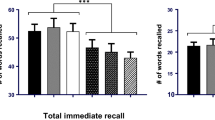Abstract
Objective: Moxonidine represents a new generation of centrally acting antihypertensive drugs. It binds to I1-imidazoline receptors and exerts its antihypertensive activity through a reduction in systemic vascular resistance, while cardiac output remains unchanged or even increases slightly. Moxonidine is prescribed for the treatment of mild to moderate hypertension. Typical doses are 0.4 to 2.0 mg given as one dose in the morning or as divided doses in the morning and evening.
Methods: The effects of moxonidine 0.4 mg once daily in combination with moclobemide or lorazepam were investigated in two, double-blind, randomised, placebo-controlled, two-way crossover studies in a total of 48 healthy volunteers. Safety assessments were made in each study and included pre- and post-study measurement of blood pressure, heart rate, ECG, haematology, blood biochemistry, and urinalysis, and recording of adverse events.
Results: In the first study, moxonidine alone was found to produce small but statistically significant impairments of vigilance detection speed at 4 h and 6 h. Lowering of subjective alertness was also observed. Repeat dosing with moxonidine produced an impairment of memory scanning performance. These findings were not reproduced in the second study, in which moxonidine alone produced an improvement in immediate word recall at 4 h and 6 h.
No interactions were observed when moxonidine was co-administered with moclobemide. Moxonidine, when co-administered with lorazepam, produced interactions with three tasks requiring high levels of attention: choice, simple reaction time and digit vigilance performance; memory tasks; immediate word recall, delayed word recall accuracy; and visual tracking.
A total of 47 adverse events were reported in study 1. Moxonidine produced a slight decrease of systolic and diastolic blood pressure. In study 2, a total of 55 adverse events were reported. In both trials, the most frequently reported events were tiredness and dryness of mouth, the latter occurring only under the moxonidine treatment. There were no clinically relevant changes observed in blood pressure, pulse rate, and laboratory tests in either study, nor was there any evidence of any interaction between moxonidine and either moclobemide or lorazepam.
Conclusion: Moxonidine was found to be safe and well tolerated in healthy volunteers. However, the impairments on attentional tasks were greater when moxonidine was co-administered with lorazepam 1 mg. These effects should be considered when moxonidine is co-dosed with lorazepam, although they were smaller than would have been produced by a single dose of lorazepam 2 mg.
Similar content being viewed by others
Author information
Authors and Affiliations
Additional information
Received: 3 June 1996 / Accepted in revised form: 18 February 1997
Rights and permissions
About this article
Cite this article
Wesnes, K., Simpson, P., Jansson, B. et al. Moxonidine and cognitive function: interactions with moclobemide and lorazepam. E J Clin Pharmacol 52, 351–358 (1997). https://doi.org/10.1007/s002280050300
Issue Date:
DOI: https://doi.org/10.1007/s002280050300




